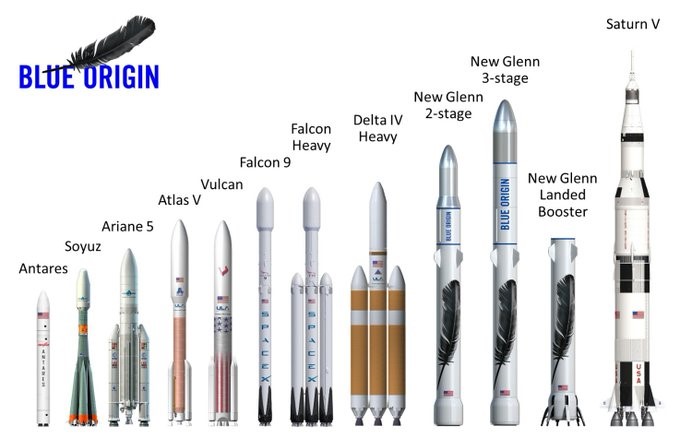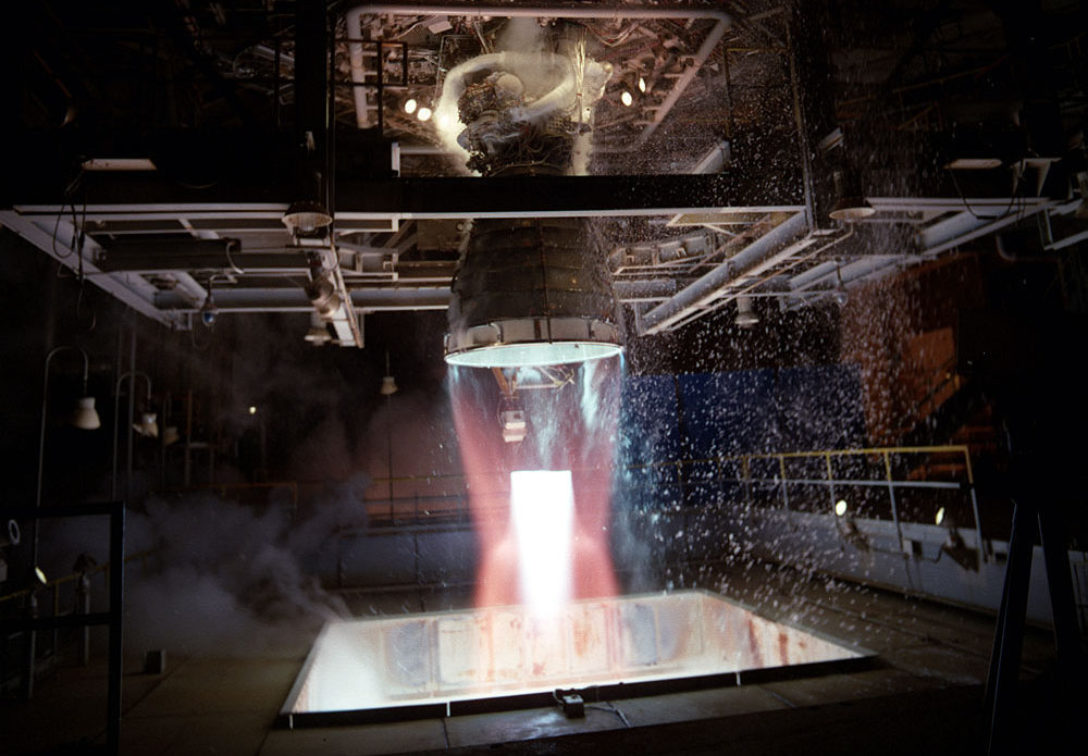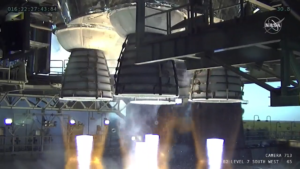On September 17th, 2016, Jeff Bezos, vaunted billionaire Amazon founder with the biceps of Russian (ahem, ROC) gymnast, tweeted out a graphic on behalf of his upstart rocket company Blue Origin. The picture showed a series of increasingly larger rockets with the Titanic Saturn V moon rocket looming at the end. Right next to mankind’s most famous launch vehicle, was a previously unseen Blue Origin rocket. Named New Glenn, after the American pilot/astronaut/icon, it was a simultaneously sleek and sizable.
Powered by four of the company’s in-house BE-4 rocket engines, the formidable staged-combustion engines (we’re a sucker for those around these parts) generates some 250 tons of thrust with high efficiency. The rocket would be able to lift 45 tons to Low Earth Orbit, just behind SpaceX’s Falcon Heavy for the most powerful in the world. To any orbit beyond LEO, it would lift more. Accompanied by a planned reusable first stage, it would also be affordable by any relevant metric. Bezos envisioned it would bring both satellites and humans to space and was the next step towards a vision of millions leaving Earth’s gravity well.

Pretty Pictures, Limited Progress
Here in the present, Jeff Bezos has just returned to earth from his rocket, albeit the rather more diminutive New Shepard and not the looming tower announced a half decade previous. Lauded and maligned in nearly equal measure, Jeff Bezos’s sub-orbital hop was none the less an impressive feat the furthers opens the space tourism door. But with the renewed focus on Bezos’s stellar aspirations comes a further question: Where’s that darn New Glenn?
Blue Origin has been rather hushed concerning the larger rockets progress. Impressive images of command centers and rockets factory’s can be found on its social media pages and point the consistent level of funding pouring into the program. However, actual evidence of flight hardware is harder to come by, with a lonely first stage tank video being prominent.
This reality speaks to a larger theme by many within the industry. Slow and questionably methodical, Blue Origin represents much of the “Old Space” cadre. Meanwhile, its consistently outpaced by its rival SpaceX in both speed of development and capability delivered. Even ULA, not known for an excess of innovation, is twiddling its thumbs waiting for the BE-4 engines Blue Origin is obligated to deliver.
Trampolines Won’t Work
Speaking BE-4 engines, that’s proving a headache all of its own. It was designed by Blue Origin to run on methane and oxygen. These chemicals also favored by SpaceX in its Raptor engine family for their density, easy handling, and acceptable performance. And BE-4 has shown promising performance in testing. On paper it even compares favorably to Raptor, matching it in thrust and likely within a hair’s breadth its specific impulse. (Specific impulse or isp is measurement of a rockets efficiency best described as how fast your propellant is exhausted from the rocket engine. Blue Origin has not released BE-4’s specific impulse figure.)
But Blue Origins sluggish pace in delivering these engines has raised tensions between the company’s, even sparking some rather piercing commentary on the subject between Elon Musk and ULA CEO Tory Bruno. There is a likely a logical explanation for this, such as the recent semiconductor and basic materials shortages in supply lines. But with Bezos’s resources, and a whole host of other rocket companies seemingly impervious to such issues, eyebrows are still raised.
Bezos didn’t become the worlds richest man by being blind to his own weaknesses. Reports have arisen of a potential pivot in Blue Origins design, specifically constructing a reusable second stage for New Glenn. More important that the actual design decision is the supporting change in development work, embracing the go fast and fail forward mentality that has rewarded its competitors. Will this suffice to save New Glenn’s future? It’s tough to say now, but with a late 2022 launch date proposed, a dramatic ramp up in development pace is sorely needed.


